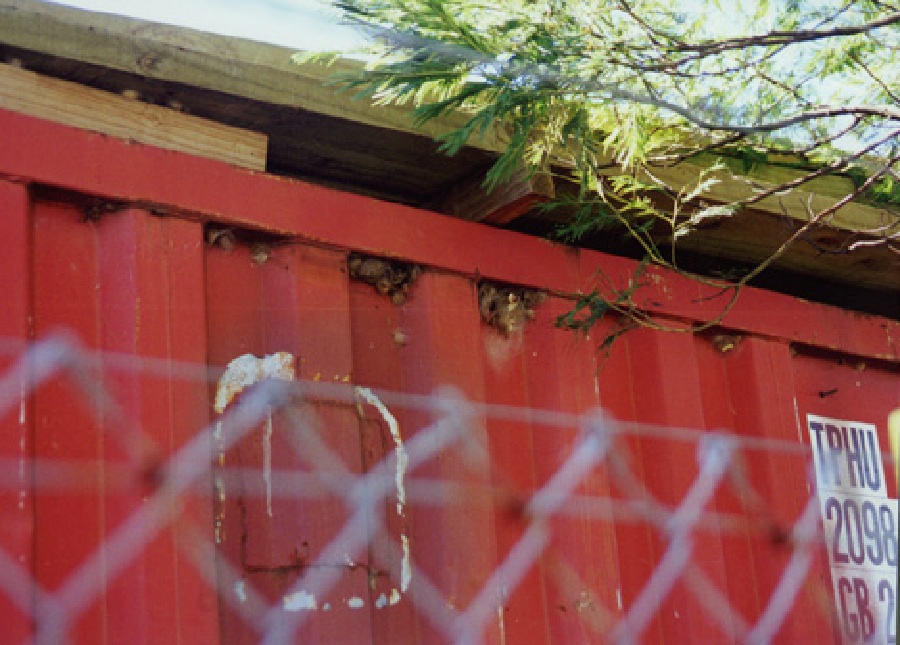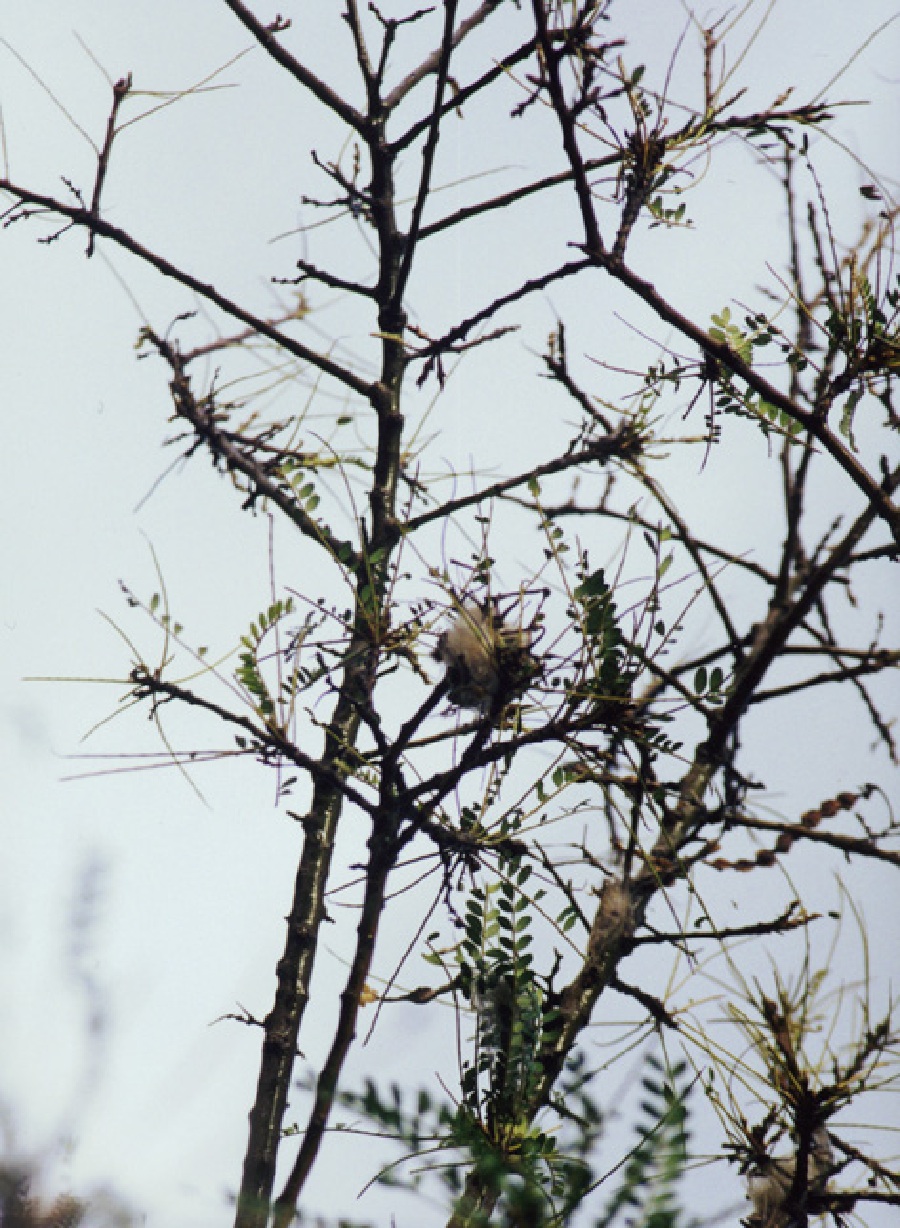PESTS AND DISEASES OF FORESTRY IN NEW ZEALAND
The painted apple moth - Teia anartoides (Lepidoptera: Lymantriidae) in Auckland
Scion is the leading provider of forest-related knowledge in New Zealand
Formerly known as the Forest Research Institute, Scion has been a leader in research relating to forest health for over 50 years. The Rotorua-based Crown Research Institute continues to provide science that will protect all forests from damage caused by insect pests, pathogens and weeds. The information presented below arises from these research activities.
From Forest Health News 85, May 1999.
On 5 May 1999 the Forest Health Reference Laboratory, Forest Research, was notified of the presence of Teia anartoides in Glendene, Auckland. A member of the public had found the distinctive looking caterpillars on acacias a few weeks earlier and they were finally brought to the attention of Peter Maddison (a consulting entomologist) who immediately informed Chris Scott, Forest Research Forest Health Adviser, Auckland who phoned the Forest Health Reference Laboratory. Chris visited the site at Glendene the same day and had no trouble finding egg masses, larvae and cocoons of the moth.
Teia anartoides is an Australian species found in Queensland, New South Wales, Victoria, South Australia and Tasmania. It can be locally very abundant and feeds on a very wide range of plants including species of Acacia, Callistemon, Eucalyptus, Grevillia, Leptospermum, Melaleuca, Pinus, Populus, Prunus, Pyrus, Rosa and Tamarix. It has even been recorded feeding on various species of ferns. In Auckland it has been found on a variety of plants but mainly on Acacia.
Of significance is the fact that it has been found severely defoliating Sophora sp. (kowhai), a New Zealand native plant (C. Scott, pers. Comm.).
Information on the biology and damage caused by T. anartoides in Australia is remarkably sparse. According to Elliott et al. (1998) acacias are the principal hosts and these authors note that the caterpillars it can feed on an extremely wide range of plants including eucalypts and Pinus radiata. Moore (1963) recorded severe defoliation to young P. radiata trees in New South Wales. Jones and Elliot (1986) say it is "a very destructive pest which fortunately has solitary habits". The latter part of this statement is interpreted to mean that the damage tends be concentrated on individual trees.

There are sporadic outbreaks of T. anartoides in Queensland that involve the almost complete defoliation of single or scattered P. radiata trees; the trees are usually one to four years old (N.M. Self, Queensland Forest Research Institute, pers. comm.). In Tasmania T. anartoides is very common and widely distributed and feeds on a wide range of trees and shrubs including P. radiata (Elliott and de Little 1984; R. Bashford, pers. comm.). R. Bashford, Forestry Tasmania (pers. comm.) has reared it from eggs and early instar larvae on P. radiata from many sites but reports that he has never seen it in large numbers on this host. However the fact that it can complete its life cycle on this host (cf. Orgyia thyellina - the white-spotted tussock moth) is noteworthy.
Most of the hosts listed above are of direct relevance to New Zealand's forest estate and include species with conservation and urban values as well as species that are grown commercially. The severe defoliation noted on Sophora sp. is also particularly noteworthy.

In Tasmania there are two generations a year (R. Bashford, pers. comm.) but Riotte (1979) notes that moths can be found in every month. The female moth has small, non-functional wings (Herbison-Evans and Crossley 1999) and like many species of lymantriids the young larvae spin silken threads and disperse on the wind (Elliott et al 1998). This behaviour is often referred to as "ballooning". R. Bashford (pers. comm.) says that he has frequently reared the parasitoid Ecthronwrpha intricatoria (Hymenoptera: Ichneumonidae) from T. anartoides field collected pupae. He reports up to 50% parasitism by this species. Ecthromorpha intricatoria also occurs in New Zealand. Philips (1992) also states that the larvae are parasitised by small black braconid wasp. As with many other species of Lymantriidae, Teia anartoides larvae have urticating hairs (Elliott and de Little 1984) and sensitive people develop allergic reactions and skin rashes. Philips (1992) reports T. anartoides presents a considerable hazard to people working in pine plantations. Teia anartoides is probably a greater threat to New Zealand forestry than the white-spotted tussock moth. This is because of the hosts noted above, particularly Acacia spp., Eucalyptus spp., Sophora spp., Leptospermum scoparium and Pinus radiata and the fact it is capable of completing its entire development on this latter species.
References
Elliott, H.J.; de Little, D.W. 1984: Insects pests of trees and timber in Tasmania. Forestry Commission, Tasmania.
Elliott, H.J.; Ohmart, C.P.; Wylie, F.R. 1998: Insect pests of Australian Forests: Ecology and Management. Inkata Press, Melbourne.
Gellatley, J. 1983: Painted apple moth. Agfacts [Entomology Branch, Biological & Chemical Research Institute, New South Wales] No. AE.30.
Herbison-Evans, D.; Crossley, S. 1999: Teia anartoides Walker 1855 (previously Orgyia phineus ) Painted Apple Moth Lymantriidae.
http://linus.socs.uts.edu.au/~don/larvae/lyma/anart.html.
Jones, D.L.; Elliot, W.R. 1986: Pests, diseases and ailments of Australian plants. Lothian, Melbourne.
Moore, K.M. 1963:. Observations on some Australian forest insects. 16. Lepidoptera attacking Pinus spp. in New South Wales. Proceedings of the Linnean Society of New South Wales 38: 340-360.
Philips, C. 1992: Tussock moths. Forest Insects No. 5. Primary Industries South Australia.
Riotte, J.C.E. 1979: Australian and Papuan tussock moths of the Orgyia complex (Lepidoptera; Lymantriidae). Pacific Insects 20 (2-3): 293-311.
( John Bain, Forest Research )
This information is intended for general interest only. It is not intended to be a substitute for specific specialist advice on any matter and should not be relied on for that purpose. Scion will not be liable for any direct, indirect, incidental, special, consequential or exemplary damages, loss of profits, or any other intangible losses that result from using the information provided on this site.
(Scion is the trading name of the New Zealand Forest Research Institute Limited.)



